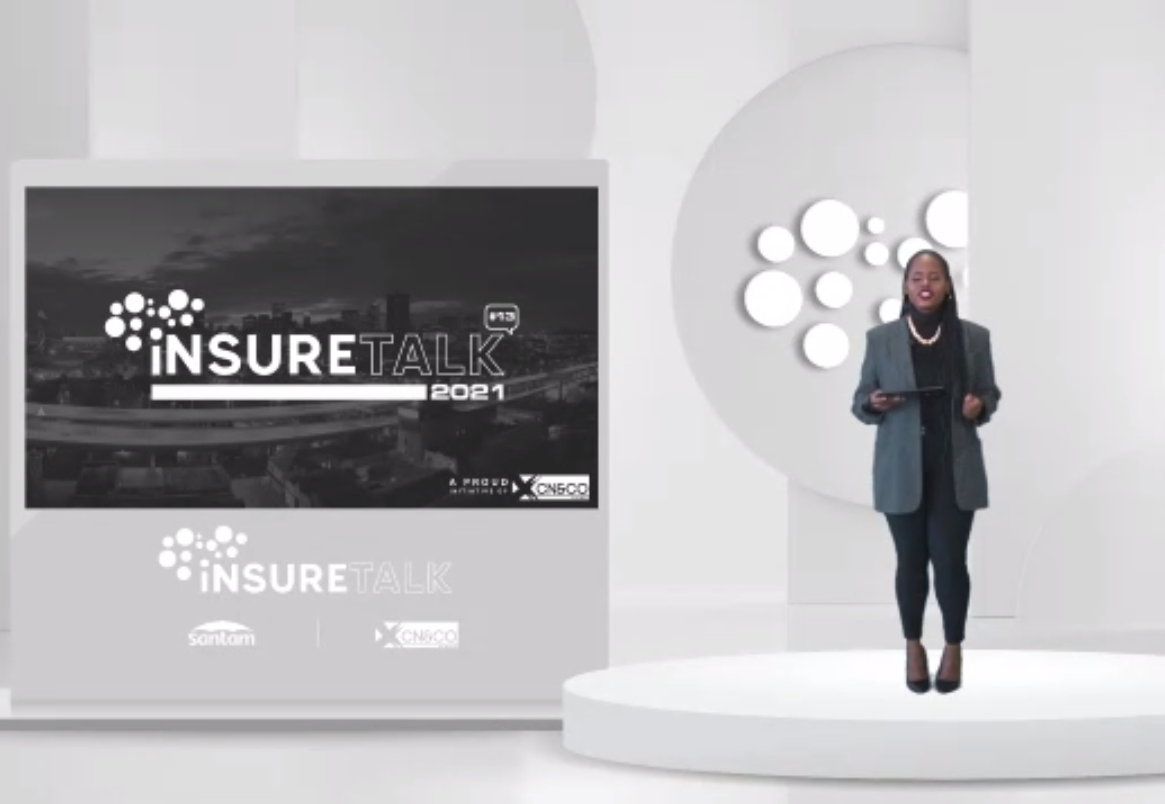
It was great to get together at InsureTalk Live!
CN&CO Events’ first InsureTalk Live event took place in Johannesburg at the end of October 2023, with an online streaming option available for those who couldn’t join us at The Venue.
The event was headline sponsored by Bryte Insurance and themed “Resilience and revolution: charting the course of next generation insurance.”
“InsureTalk is a conference that was developed by the people of this industry, for the people of this industry,” said MC Christelle Colman (pictured above). “In the dark days of the pandemic, the CN&CO team came up with this wonderful idea to host an online conference to keep us occupied, informed, and connected during the pandemic.
“And here we are today! We’ve moved to our first live event and we are really, really looking forward to our live speakers.”
Our first speaker was CN&CO founder, Ami chairman and EasyEquities chief engagement officer, Carel Nolte. Carel unpacked the origins of the InsureTalk franchise, which he started with the head of CN&CO Events, Llewellyn du Plessis.
“It really was a way to help people in the creative economy earn a little bit of income by performing at InsureTalk, and also to enable insurance professionals to get CPD hours and stay connected.”

The first webinar drew 80 attendees.
“We were really chuffed by the attendance,” said Carel. “We’ve now grown to over 3 000 registrations each session. We’ve had 120-odd thousand registrations since we started in April 2020.”
Carel went on to thank all the sponsors by name who have supported InsureTalk over the years.
Carel was followed at the podium by Liza Morris, regional manager for Bryte Insurance in the Western Cape, who explored the occurrence of natural catastrophes in South Africa and around the world. According to a Munich Re report, nat cats accounted for US$270 billion in 2022, with Hurricane Ivan accounting for $100 billion.
“Munich has said by half-year 2023 we were already on $110 billion, so I think we’re going to break 2022’s record loss,” said Liza.
South Africa accounted for $3.5 billion. That’s close to R64 billion, of which Liza says only R37 billion was covered by insurance.
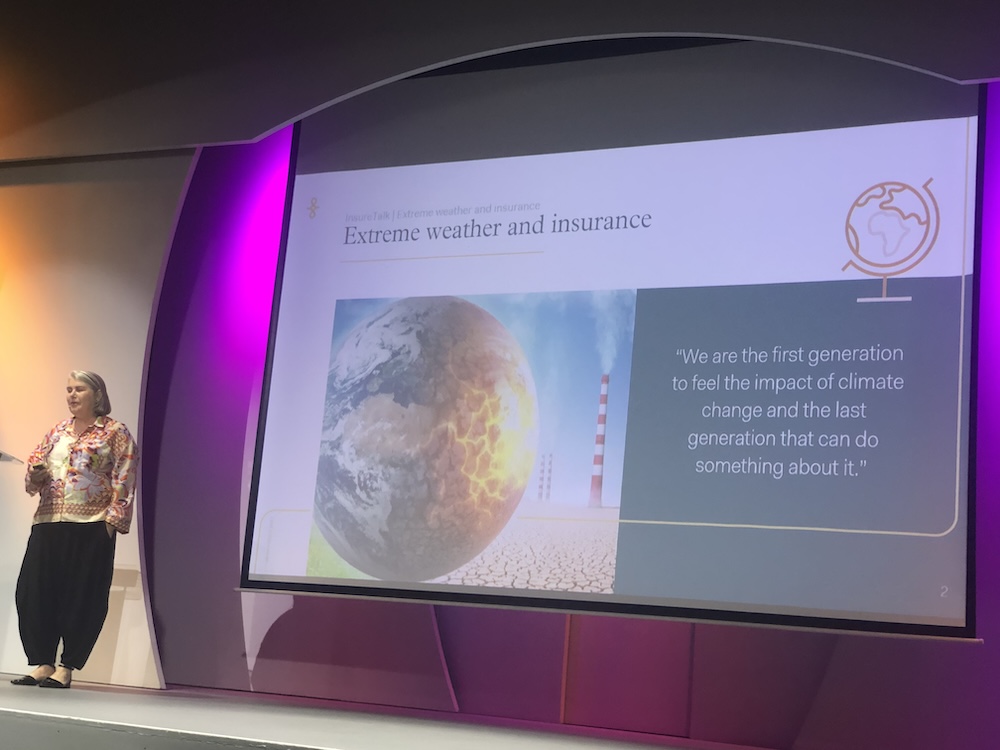
Liza spoke about some of the specific nat cats that have affected South Africa in recent times, notably in KZN and the Western Cape, and how the “noble” insurance sector was there to help South Africans pick up and carry on. However, she also issued a warning that this was unsustainable.
“Those pools that we put together cannot deal with this extent of things,” she said. “We are going to have to be far more proactive… because it’s not just about the damage to assets, it’s the damage to human beings.”
The insurance/reinsurance pool can’t cope, which Liza says calls for radical measures.
“We are going to have to start rating individually again,” she said. “Individuals and businesses are going to have to make that call as to what risks they want to cover and what risks they can’t afford to cover.”
“But,” she said, “we are living in exciting times. I am hopeful that we will see some really innovative products coming through in the marketplace because of what is happening in our environment.”
Next up was a panel discussion. Carel was joined on stage by IISA CEO Thokozile Mahlangu, and IISA member Puseletso Makhura. The trio discussed the benefits of being part of a professional body like the IISA.
“I always sound like a parent when I talk about the role of a professional body,” said Thokozile. “But it’s important to remind the industry that a professional body like IISA plays a very important role in professional development, as well as setting standards for the profession. It sets you apart from those who are not accredited.”
Thokozile also raised the issue that, in the CoFI Bill, there is a requirement for professionals in the industry to be accredited.
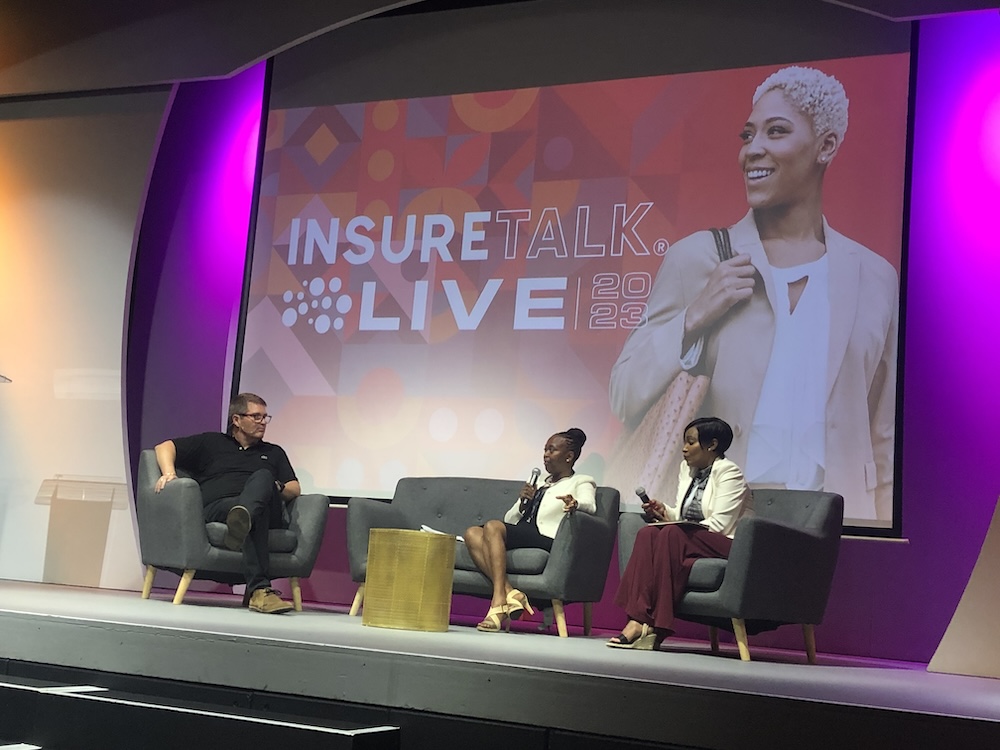
Puseletso said obtaining a designation can be game changer.
“Once you give yourself time to join and be active in the institute, people will see that you are serious about your career and your profession. They understand that pursuing the professional designation requires hard work.
“It has certainly opened a lot of doors for me.”
Thokozile highlighted the fact that IISA membership is not expensive, ranging from R1 700 to R2 700 per year.
Following the panel discussion was a talk by Barry Simons, regional underwriting manager for Bryte in the Western Cape, entitled “Underwriting in a changing environment”.
He unpacked four main drivers of change in the underwriting environment: Covid-19, power surges and loadshedding, inflation, and reinsurance.
“Covid hit and billions were paid out,” he said. “We had to knock on the reinsurers’ doors. This brought lots of money back into the market to reignite our economy.
“Just before then we had had the George and Knysna fires. That was a good couple of billion as well. Then we had the KZN floods, then we had civil unrest, then we had the Western Cape floods… and the hits keep coming.
“When we consistently make losses due to our books of business, it has to come from somewhere. And unfortunately, the scope and level of the increases that we see from the reinsurers is of the magnitude that it cannot be subsidised by the insurer.
“So, when we look at what 2023’s negotiations look like, where the insurers use terms like double-double-half, meaning double the premium, double the deductible, half the cover, you understand that that translates into ‘we can’t subsidize that’, and that’s why we find ourselves in a hard market.”
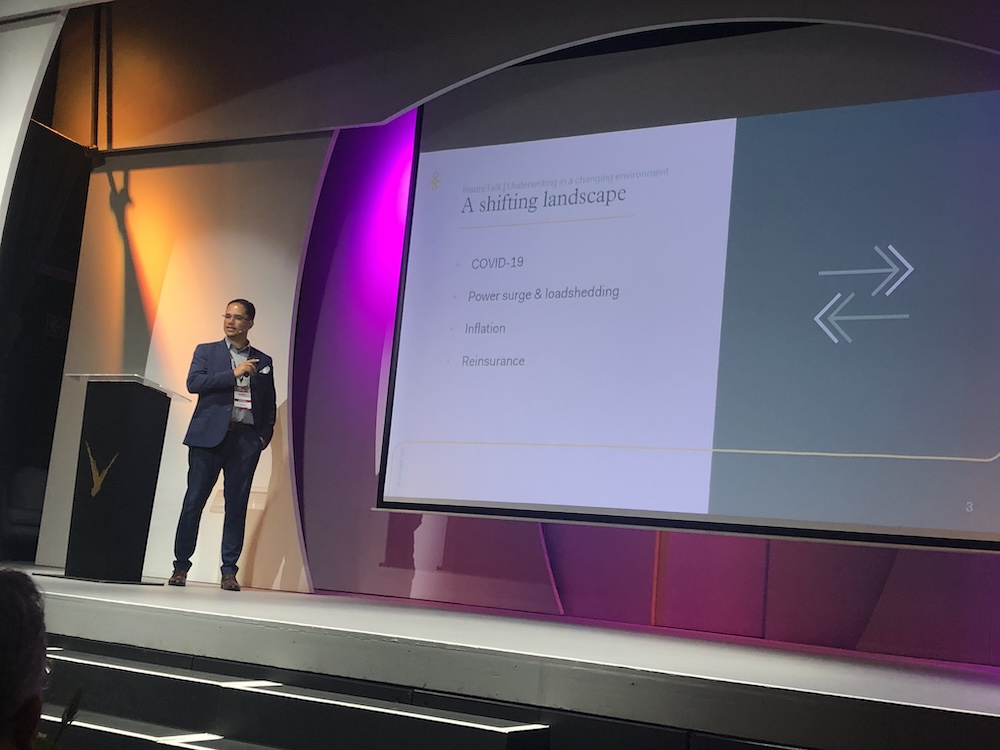
He spoke about profitability, as measured using the combined ratio, and how the hard market is hard for everyone, including customers and insurers. “We need to operate in a hard market as if it is a hard market. We are not trying to sell price increases for the sake of profit. It’s a sustainability thing!”
Load shedding has also hit the industry hard.
“In the Western Cape in the first half of the year, we suffered nine fire claims,” said Barry. “All of those were risks we would write again. There was nothing wrong with our risk selection. In one way or another, indirectly or directly, those fires were all started by load shedding.”
Underwriters are being far more risk-selective.
“Back in 1998 when I started out, if you were a corner shop, a fixed rate would apply. This is your loss ratio, it’s acceptable, on we go.
“You can’t think about things so simplistically anymore. Now you start looking at sending someone out to do a survey, checking COCs, checking the distance of the client’s stock from the DB board…”
Old underwriting definitions need to go, he said. We can’t think of a million rand as a large loss anymore.
“We need to get rid of some of the old definitions so that we can more properly rate and properly price and forecast because of the effects that it has on profitability.
“We are in a hard market and there are very real reasons why we do what we do when it comes to price change. We have real financial concerns and financial constraints around sustainability. If we don’t take it seriously and do the necessary, I don’t know how sustainable our future is.”
Bryte’s head of claims liabilities, Christopher Appanah, presented on the future of claims innovation and insurance. His talk focused on four key themes: technology, collaboration, data and personalisation.
“For starters, we want to find ways – and technology is one of those ways – to mitigate and reduce the average cost of claims,” said Christopher. “The use of AI and robotic process automation can radically cut your average cost of claims.
“Imagine a situation where your claim staff have free time to focus on the things that actually matter, like complex claims or strategic initiatives, all because you’ve implemented a technology that frees up their time.”
AI can also be used to detect fraud.
“The South African Insurance Crime Bureau estimates that around 20% of claims paid out yearly are fraudulent,” said Christopher. “AI and machine learning are able to increase the accuracy with which hits are made on specific matters that might be fraudulent.”
Customer experience and staff happiness are two secondary benefits of AI and RPA.
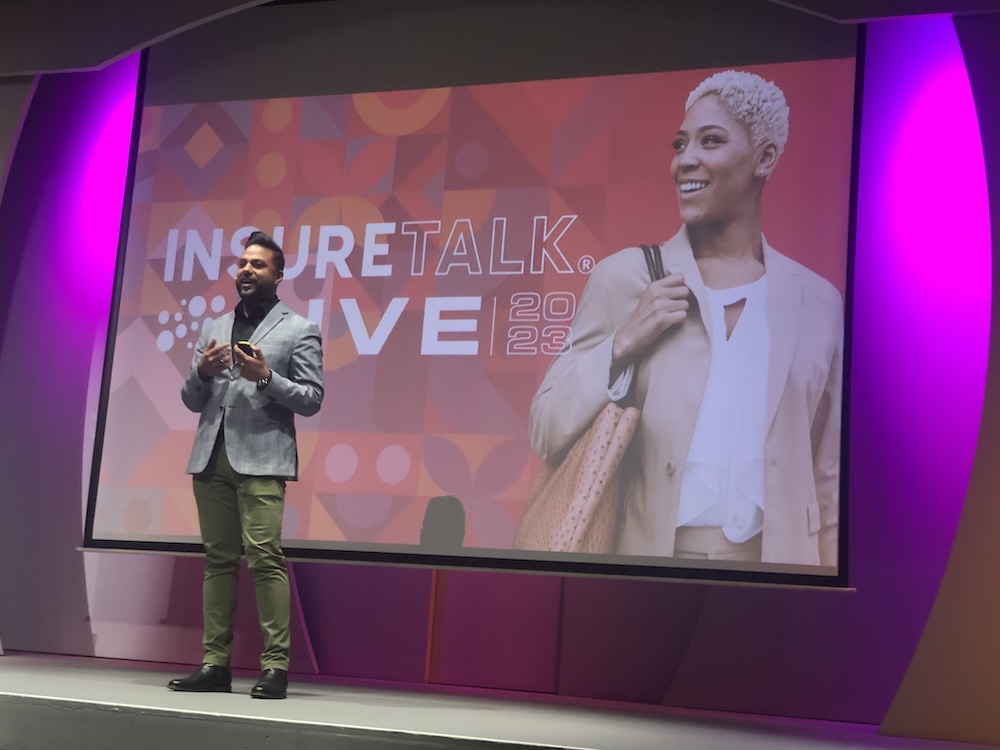
Christopher then touched on the issue of data analytics, which he defined as “asking the right questions with the information that’s in front of you so that you can identify patterns and determine what you can do to improve certain operational or strategic inefficiencies.”
Using data analytics, Christopher and his team were able to increase recoveries by 30% year on year. It can also be used in the claims environment to identify trends that can help you to write risks differently.
Customer satisfaction can also be augmented through innovation.
“Think about personalisation, think about communication channels, customers being able to choose how they want to communicate with you, when they want to communicate with you, how they want to receive information from you,” said Christopher. “Technology can help you do that better.”
He spoke about the role technology can play in training and developing talent, and how your people should be at ease with the technology you employ in your business.
“But also focus on soft skills,” he said. “Compassion, empathy, communication and conflict resolution.”
Christopher’s final comments were around collaboration and integration. One area where we see these factors in action is the collaboration between traditional insurers and insurtechs.
“By leveraging the systems of insurtechs, such as AI and RPA, you can either use what they have and apply it in a partnership – so, have your insurtech partner run your claims process – or you can learn from them. You can take what they have, their AI, their RPA, tweak it a little bit and make it fit for purpose for your business. It’s about making sure that in your collaboration and partnership you are always learning from each other.
“In short, insurtechs should not be seen as a threat to traditional insurance companies. They should be seen as vital partners.”
Samantha Williams, head of legal and regulatory affairs, at the Financial Intermediaries’ Association, gave an overview of the work that the FIA does in promoting the collective interests of professional advisory businesses with a broad range of stakeholders for the benefit of members and clients. She also spoke about the current regulatory drivers that will impact advisory businesses over the next few years.
“We currently represent more than 1,700 FSPs and 12,000 key individuals and representatives,” she said.
The FIA represents intermediary businesses in the healthcare, employee benefits, non-life, financial planning and discretionary investment management spaces, as well as subject matter-specific disciplines such as transformation, education and training, and membership.
“We look at driving impactful solutions and innovations,” she said. “When we meet with regulators, both in South Africa and internationally, they tell us that we really, as intermediaries, are the closest voice to the client. And so we have to bring that client voice to the discussion.
“They don’t only want to hear from product providers, they really want to understand what the issues are, but what we need to bring are solutions to the table because that is fundamental to changing the environment.”

Sam listed some of the submissions that the FIA has made into several important bills that are set to have a massive impact on the industry when they are passed into law. These include the national health insurance (NHI) and conduct of financial institutions (CoFI) bills. She also spoke about cybercrime and how the FIA is helping its members with this scourge. The Employment Equity Amendment Bill, anti-money laundering and our FATF grey-listing , the two pot retirement funding system, FSCA levies and the non-life FICA project.
“We understand it’s a journey,” she said. “We’ve, we’ve got lots and lots of broken things as a country and as an industry that need to get fixed. But if we work together to find solutions and take these opportunities to step in and protect our industry. It will take us all working together to make a difference.”
Chad Thomas, CEO of IRS Forensic Investigations and regular crime commentator in the media, gave a very interesting talk on deep fake and social media scams. He opened his talk by mentioning the dire lack of funding for critical law enforcement agencies such as the Hawks, who get around two percent of the annual police budget.
“Conversely, VIP protection and security services within SAPS get 3.5% of the annual police budget. So, where do our priorities lie when it comes to the fight against crime?”
The Investigating Directorate against Corruption (IDAC), formed after the Zondo Commission completed its work, currently operates on R350 million per year.
“You can’t do very much with that,” he said. “This to me is a massive blunder on the part of the state because the investigating directorate is the one particular unit that would show return on investments – as long as you invest in the correct members who are skilled in financial recoveries, clawbacks, etc.”
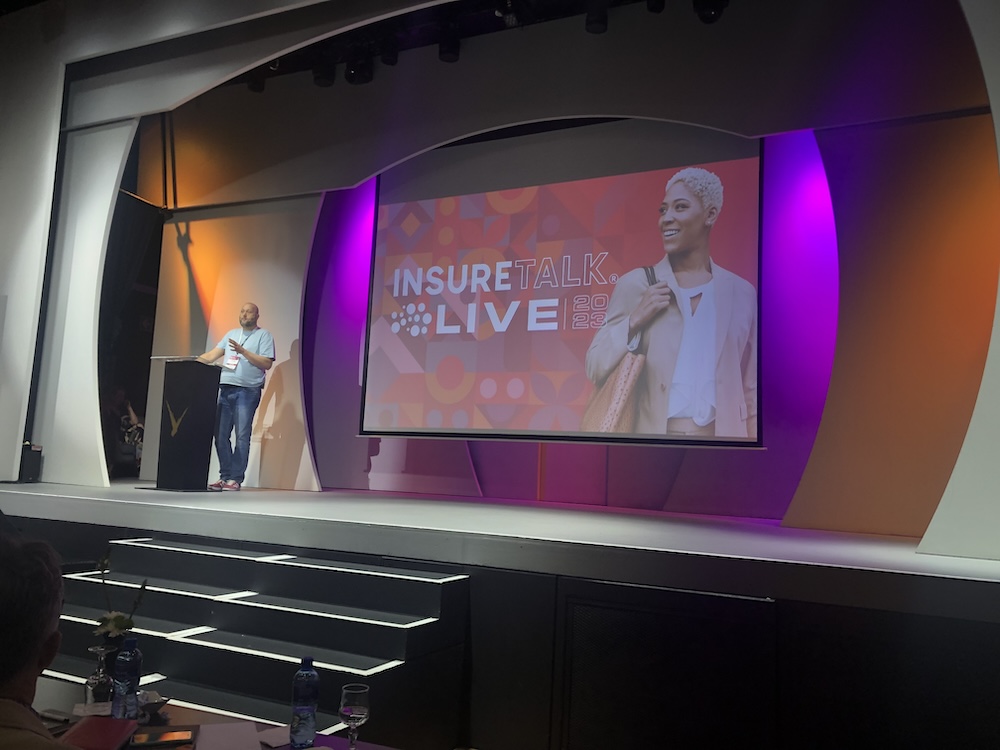
The Cyber Crimes Act, which has been in force for over a year now, calls for specialised agents to be appointed.
“This has not happened,” said Chad. “We are reliant on the South African Police Service together with the DPCI (Hawks) to provide such members, but we already know their capacity issues.”
Our low crime-fighting capacity makes it nearly impossible to deal with the uptick in financial crimes involving practices such as deepfakes and catfishing.
“Bloomberg reported in August that deep fakes will contribute in the region of R10 trillion in losses due to cybercrime worldwide. In America, a company that has an incident involving a deepfake scam will lose around $300,000 at the low end, and $35 million at the high end.”
It costs between $300 and $20,000 to create a deepfake video.
But how does it work?
“A deepfake is a manipulated video audio image created using artificial intelligence, which involves replacing a person’s face, voice or body with someone else’s, making it difficult to distinguish the fake from the original.
“A deepfake video can create a fake call from a bank representative asking the victim to share their banking information. A fraudster can also create a deepfake video of a business owner authorising the transfer of large sums of money to a fraudulent account. The video can then be used to convince business employees to transfer the money without suspecting any wrongdoing.”
He called on the financial services industry to implement stronger identification verification processes, increase consumer awareness and invest in deepfake detection technology to help reduce the risk of fraud and identity theft.
Simply CEO Anthony Miller joined the conference via video link from Cape Town to discuss the future of life insurance. He talk focused on five themes: telematics and wearables, big data and advanced analytics, AI and machine learning, blockchains and smart contracts, and insurtech platforms and integrators.
Wearables, such as Apple Watches and Garmins, are creating data and opportunity for life insurers to help people live healthier lives.
“Real-time health data enables very personalised pricing and policies, and obviously creates better outcomes for everybody,” he said. “The more data you have, and the better you are at analysing it, the better your competitive advantage in the industry.”
Anthony explained the difference between big data and AI.
“Big data and advanced analytics tend to be static and tend to be driven by professionals,” he said. “The most important or most significant thing with AI and machine learning is that the machine is starting to do the work for you.
“But it’s not all bad and it’s not all risk. AI actually may be really positive for jobs! Every new significant technology that’s come out, people have been fearful. For the most part AI has increased productivity, which has led to economic growth, which has in turn led to better jobs.”
Anthony said AI can be really effective in enabling blockchain and smart contracts.
“I think we are going to see lots of really innovative, efficient solutions coming out of the blockchain that enable far better ways of dealing with contracts, significant opportunities to reduce fraud and lots of great opportunities to improve efficiency in the process of putting agreements in place.”
When it comes to insurtechs and integrators, Anthony said they have become a key part of the insurance industry.
“The key point about these platforms is that they enable other players to participate really effectively in the industry. I see a great opportunity for businesses to invest in this area. To a large extent, those that don’t will be left behind.”
The final speaker of the day was Kate Weaver-Gibbs, who shared the inspirational story of her road to recovery after a terrible accident left her body and mind in pieces. Her skull was literally broken in half, she had a broken neck, her right side was paralysed, and she had brainstem damage. She spent time in a coma, and awoke with no memory.
“People don’t generally come back from those injuries,” she said.
But Kate did. Thanks to an amazing surgical team, a lengthy rehabilitation period and learning to do everything again from scratch, Kate survived to climb the Rocky Mountains and register for her Master’s at Harvard.
“You have to relearn how to walk. You have to relearn how to move your eyes. You have to relearn how to hold a pen, clean your teeth, cut your food,” she said.
But Kate’s is not a story of woe.
“It’s a story about the love and the goodness that can be found in the darkest moments of what the media and contemporary life would have you believe is an increasingly fractured and broken world,” she said. “But in my experience, life is actually amazing! It’s not about dodging the curve balls, but about grabbing them and making them work for you.
“The greatest lesson that I have learned – and it’s one that I’ve come back to over the last seven years – is that people are priceless. Humanity is the hero. You just need to need it to see it because it’s there all the time. It’s always around us.”
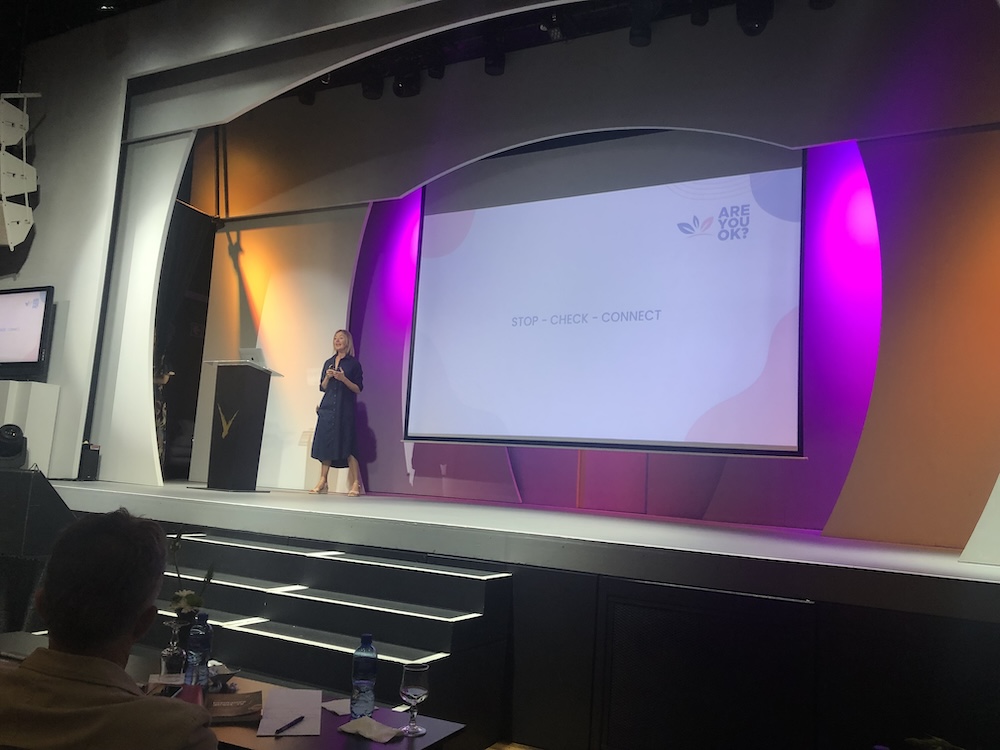
Kate’s positive message was a fitting way to end the first instalment of InsureTalk Live, before guests settled in for a spot of lunch and a catch-up with each other.
“This is what InsureTalk Live is all about,” says CN&CO Events head, Llewellyn du Plessis. “It builds on the informational aspects of the InsureTalk webinars by adding an element of being there, being live, and interacting with people in real life. We look forward to bringing you another edition of InsureTalk Live soon!”
In the meantime, don’t forget to book for our next InsureTalk webinar, which takes place on 23 November from 10am to 1pm. There is no charge to join, and attendees will receive 2.5 CPD hours.
If you missed InsureTalk Live, you can watch the recording below.



